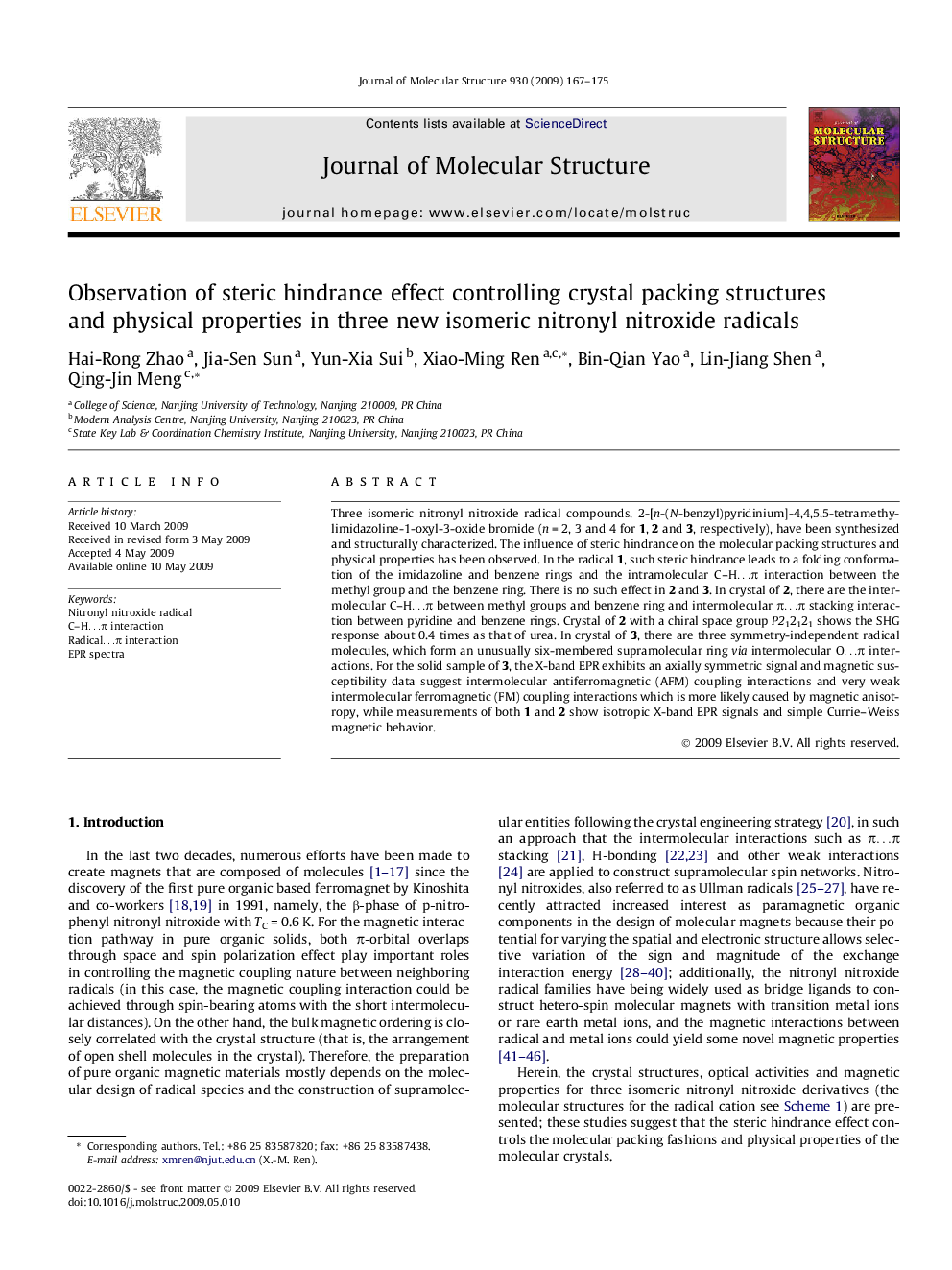| Article ID | Journal | Published Year | Pages | File Type |
|---|---|---|---|---|
| 1411434 | Journal of Molecular Structure | 2009 | 9 Pages |
Three isomeric nitronyl nitroxide radical compounds, 2-[n-(N-benzyl)pyridinium]-4,4,5,5-tetramethylimidazoline-1-oxyl-3-oxide bromide (n = 2, 3 and 4 for 1, 2 and 3, respectively), have been synthesized and structurally characterized. The influence of steric hindrance on the molecular packing structures and physical properties has been observed. In the radical 1, such steric hindrance leads to a folding conformation of the imidazoline and benzene rings and the intramolecular C–H…π interaction between the methyl group and the benzene ring. There is no such effect in 2 and 3. In crystal of 2, there are the intermolecular C–H…π between methyl groups and benzene ring and intermolecular π…π stacking interaction between pyridine and benzene rings. Crystal of 2 with a chiral space group P212121 shows the SHG response about 0.4 times as that of urea. In crystal of 3, there are three symmetry-independent radical molecules, which form an unusually six-membered supramolecular ring via intermolecular O…π interactions. For the solid sample of 3, the X-band EPR exhibits an axially symmetric signal and magnetic susceptibility data suggest intermolecular antiferromagnetic (AFM) coupling interactions and very weak intermolecular ferromagnetic (FM) coupling interactions which is more likely caused by magnetic anisotropy, while measurements of both 1 and 2 show isotropic X-band EPR signals and simple Currie–Weiss magnetic behavior.
